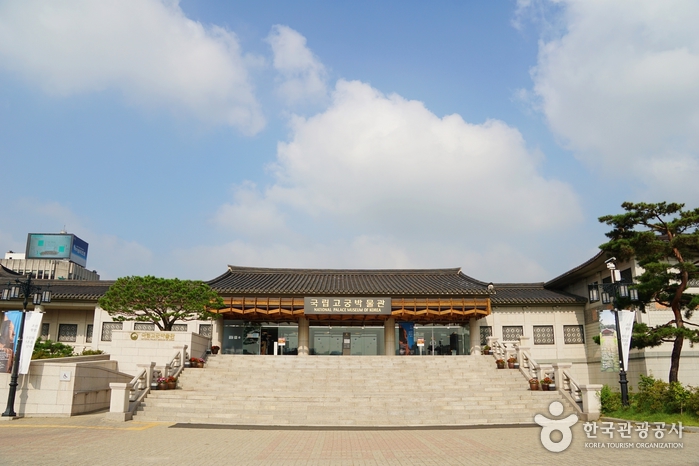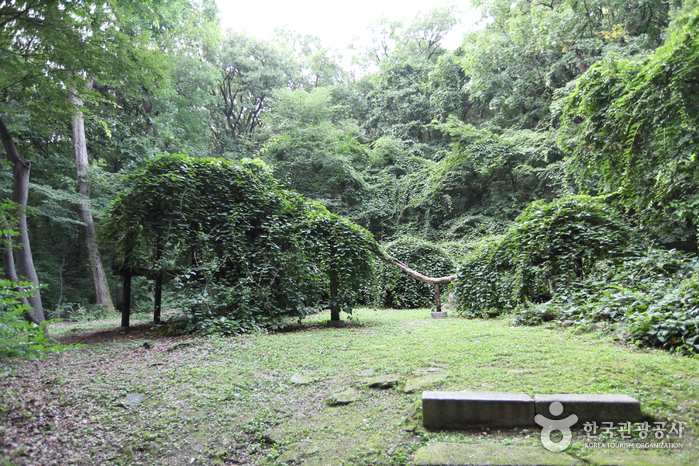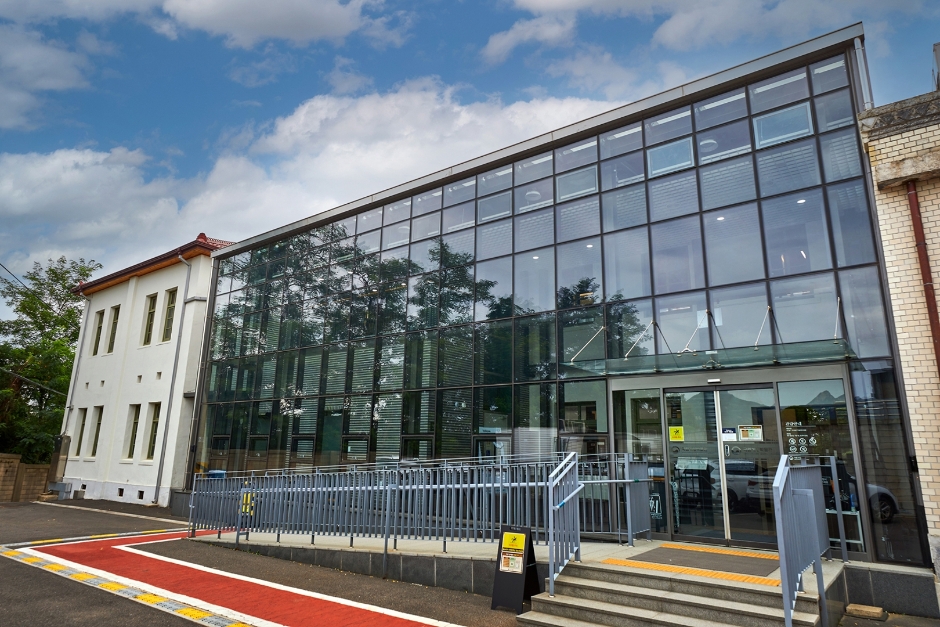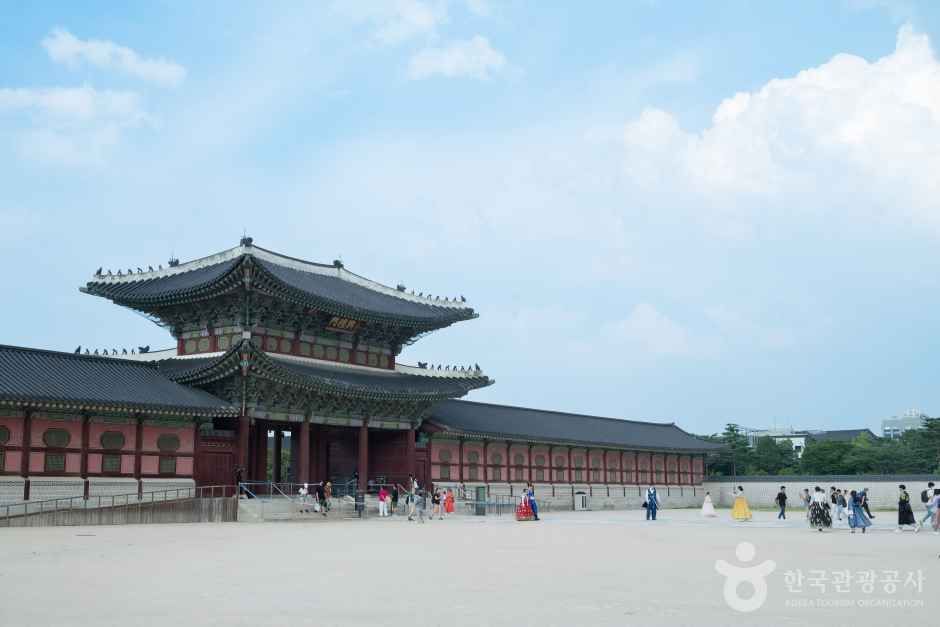Olive Young - Mapo Station Branch [Tax Refund Shop] (올리브영 마포역)
10.7Km 2024-04-18
1F, #115, 53, Mapo-daero, Mapo-gu, Seoul
-
Beodeul Maru - Korea Cultural Heritage Foundation Branch [Tax Refund Shop] (한국문화재재단 버들마루)
10.7Km 2024-10-15
37, Samcheong-ro, Jongno-gu, Seoul
-
National Palace Museum of Korea (국립고궁박물관)
10.7Km 2023-03-24
12, Hyoja-ro, Jongno-gu, Seoul
+82-2-3701-7500
The National Palace Museum of Korea displays over 40,000 relics from the Joseon dynasty. With various treasures on exhibit, the museum continues to provide information on the dignity of royal culture and the creativity of royal cultural assets.
Daraenamu Tree in Changdeokgung Palace (창덕궁 다래나무)
10.7Km 2025-01-13
99, Yulgok-ro, Jongno-gu, Seoul
+82-2-3668-2300
Daraenamu Tree in Changdeokgung Palace is estimated to be 600 years old, meaning it had likely been planted before the palace was built. The tree stands 19m in x_height, and has six separate trunks sprawling in all directions. It is the biggest and the oldest in Korea. It is designated and protected as a National Natural Monument.
Himart - Sujin Branch [Tax Refund Shop] (하이마트 수진점)
10.7Km 2024-04-22
229, Sanseong-daero, Sujeong-gu, Seongnam-si, Gyeonggi-do
-
Aēsop - Samcheong Branch [Tax Refund Shop] (이솝 삼청)
10.7Km 2024-04-17
58-3, Samcheong-ro, Jongno-gu, Seoul
-
I'mdr. LLC. (아임닥터 유한책임회사)
10.7Km 2025-10-23
3F, 6-3 Bugahyeon-ro 2-gil, Seodaemun-gu, Seoul
I'mdr. LLC., leads the global medical tourism market with Korea's cutting-edge medical technology and world-class medical services.
With I'mdr, a health and beauty trip to Korea will be safer and more comfortable. It provides both aesthetic medical services and treatment for severely ill patients. Enjoy innovative, patient-centered medical tourism experience through I'mdr.'s customized medical concierge services.
National Meteorological Museum of Korea (국립기상박물관)
10.7Km 2024-03-26
52 Songwol-gil, Jongno-gu, Seoul
A museum where one can look at Korea's meteorological observation history and technological development through exhibitions. The museum has the world's first rain gauge, invented in 1441, in the early Joseon dynasty. The museum operates approximately 350 meteorological observatories across Korea and focuses on promoting the uniqueness and excellence of Korea's meteorological science. There are permanent collections and special exhibitions. The permanent collections focus on the history of meteorological science in Korea. At the same time, the special exhibitions take a closer look at the history and information about meteorological science and natural disasters (e.g., earthquakes) that occurred in various regions of Korea. There are experience programs related to meteorological science, such as making a rain gauge or learning about rain gauges.
63 Buffet Pavilion (63뷔페 파빌리온)
10.7Km 2024-03-15
(63 Square, basement 1st floor, Yeouido area) 50, 63-ro, Yeongdeungpo-gu, Seoul
+82-2-789-5731
63 Buffet Pavilion is a buffet restaurant located at GF floor of Yeouido’s 63 Square. The buffet spread here features dishes from around the world. The most popular feature of the buffet is the chaekkeut steak (strip loin steak), made freshly using top-quality beef. One can also find yanggalbi (lamb chops), hoe (sliced raw fish), chobap (sushi), and daege (snow crab). Note that visitors are required to reserve their spot.
Gyeongbokgung Palace (경복궁)
10.7Km 2025-10-23
161 Sajik-ro, Jongno-gu, Seoul
+82-2-3700-3900
Gyeongbokgung Palace was built in 1395 as the official palace of the Joseon dynasty by Yi Seong-gye, the future King Taejo and founder of the new regime. Gyeongbokgung Palace is commonly referred to as the Northern Palace because of its location to the north, comparied to Changdeokgung Palace in the east and Gyeonghuigung Palace in the west. Gyeongbokgung Palace is arguably the most beautiful and is the largest of all five palaces. Many Joseon kings were crowned here. The premises were once destroyed by fire during the Imjin War (1592-1598). However, all of the palace buildings were later restored under the leadership of Heungseondaewongun during the reign of King Gojong. The assassination of Empress Myeongseong, however, resulted in Gyeongbokgung Palace losing its function as a royal palace, eventually witnessing the downfall of the Joseon dynasty. Gyeongbokgung Palace retains the original Gyeonghoeru Pavilion, a prime example of Joseon architecture, and the Hyangwonjeong Pavilion and pond. The sculptures in the Geunjeongjeon Hall exemplify Joseon-era sculpture techniques. The west side of the area outside Heungnyemun Gate is occupied by the National Palace Museum of Korea, while the eastern side of Hyangwonjeong Pavilion within the Gyeongbokgung Palace is occupied by the National Folk Museum of Korea.
![Olive Young - Mapo Station Branch [Tax Refund Shop] (올리브영 마포역)](http://tong.visitkorea.or.kr/cms/resource/94/2888894_image2_1.jpg)



![Himart - Sujin Branch [Tax Refund Shop] (하이마트 수진점)](http://tong.visitkorea.or.kr/cms/resource/43/2881643_image2_1.jpg)


 English
English
 한국어
한국어 日本語
日本語 中文(简体)
中文(简体) Deutsch
Deutsch Français
Français Español
Español Русский
Русский